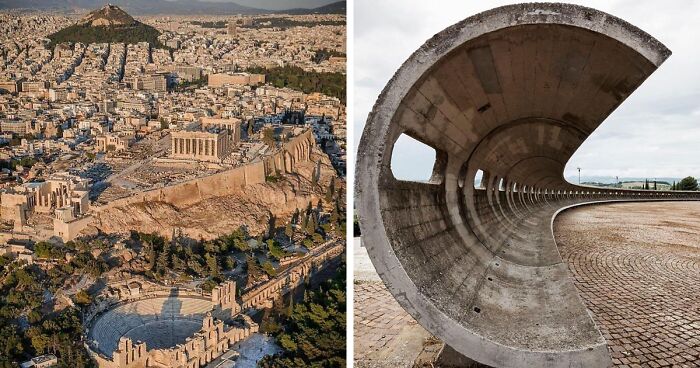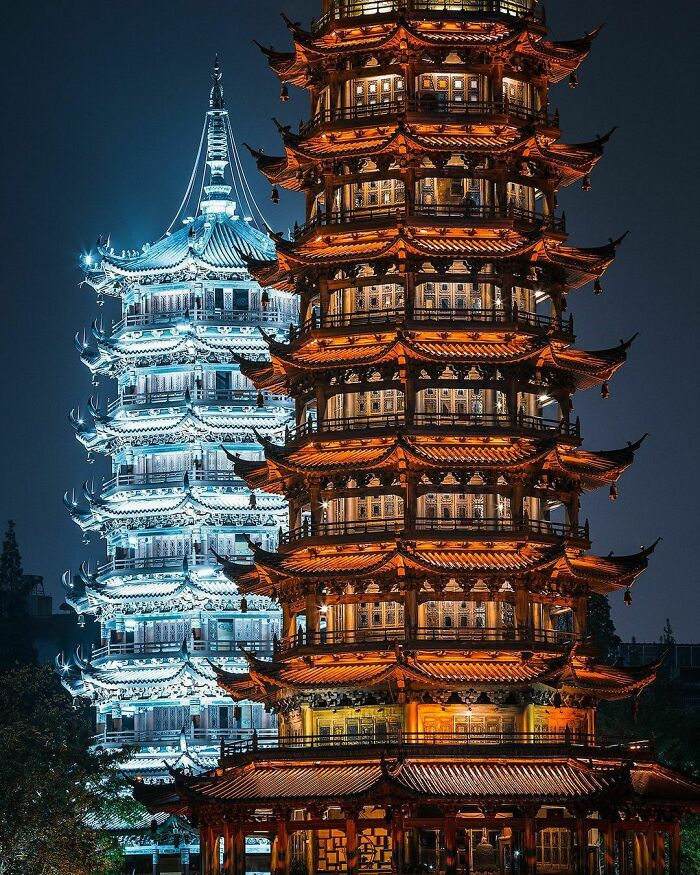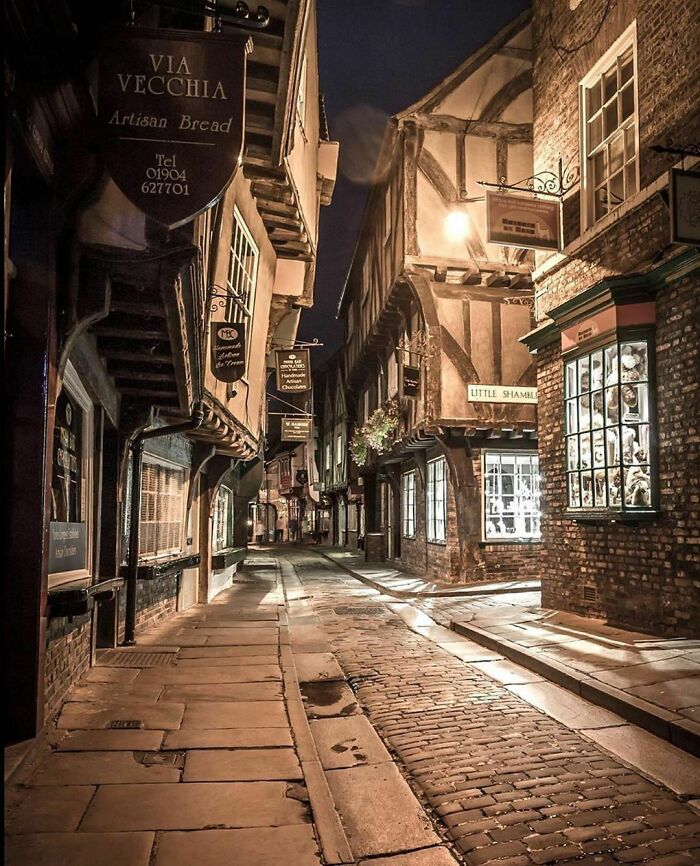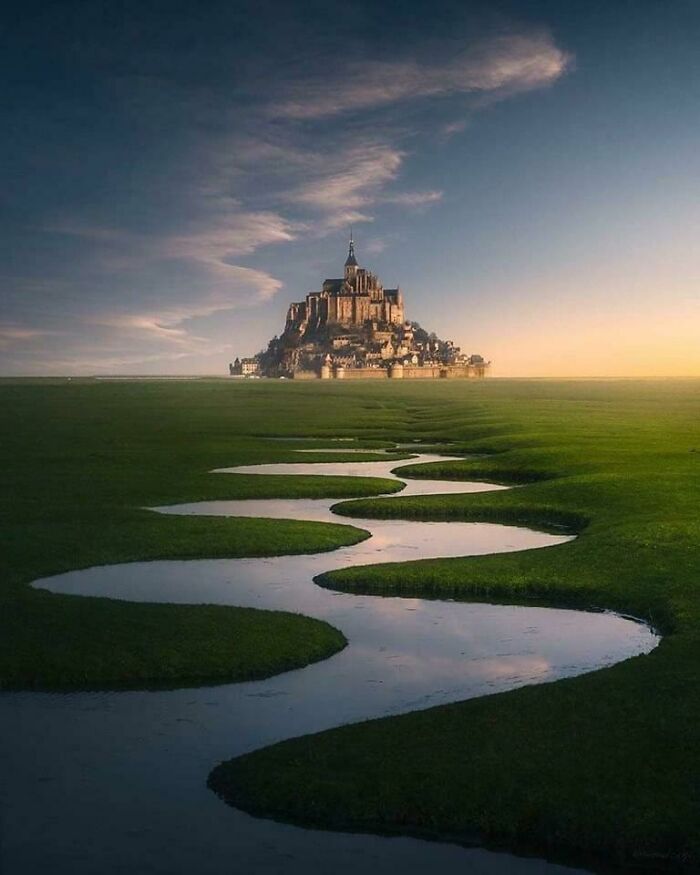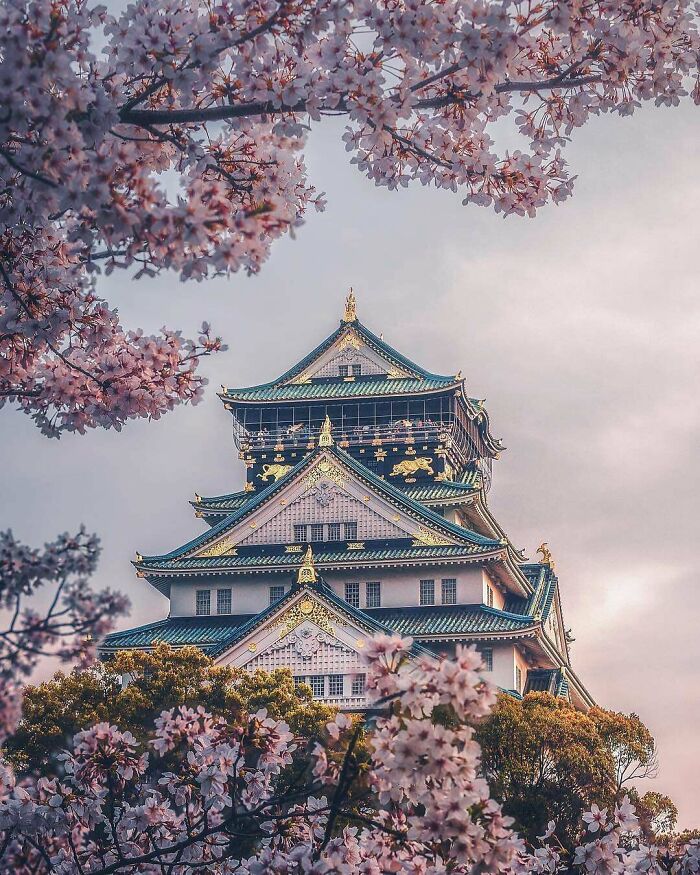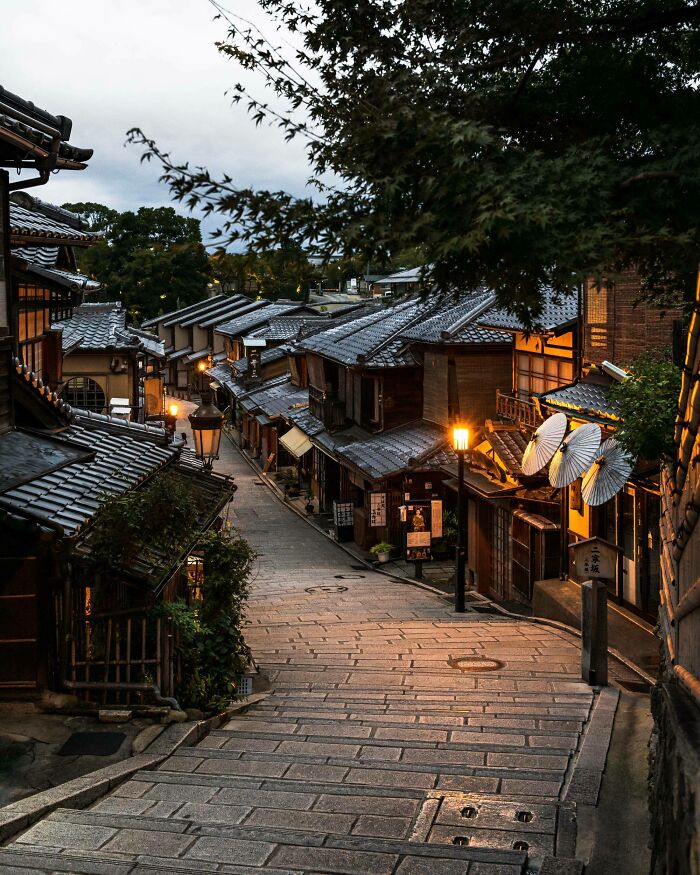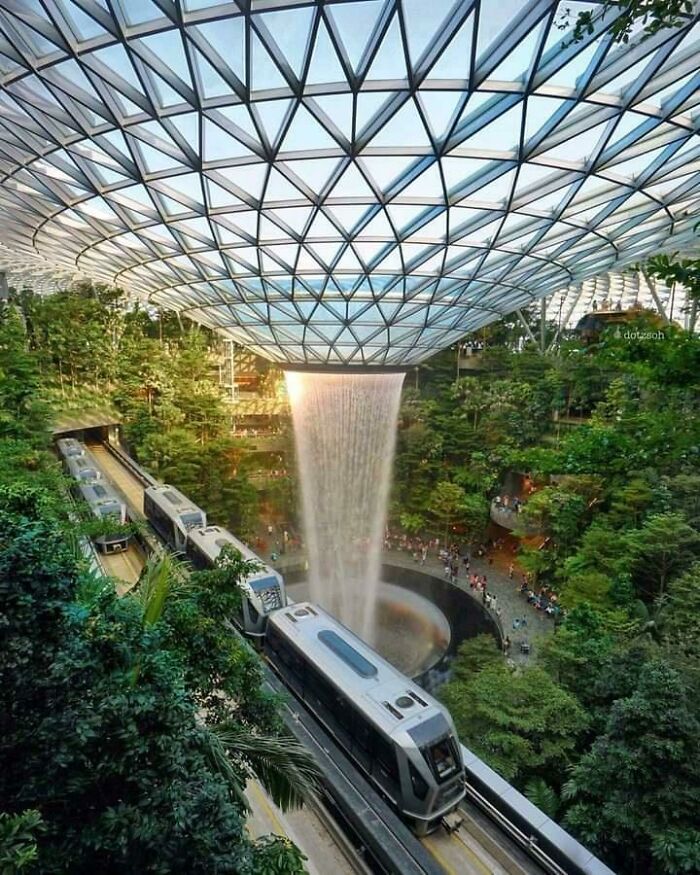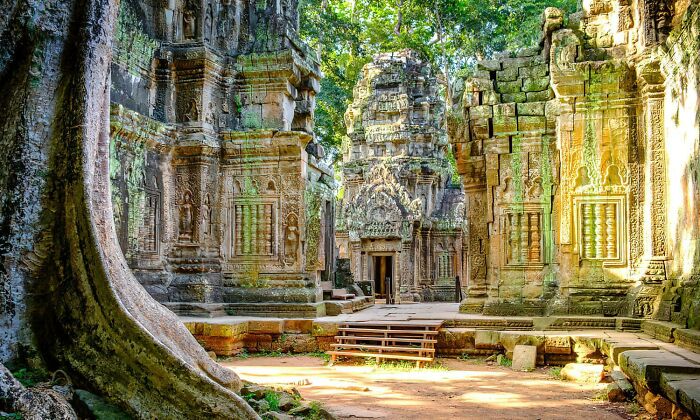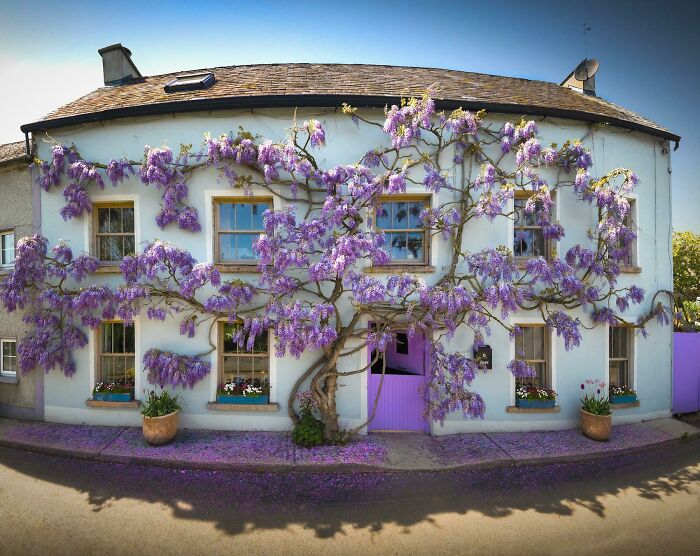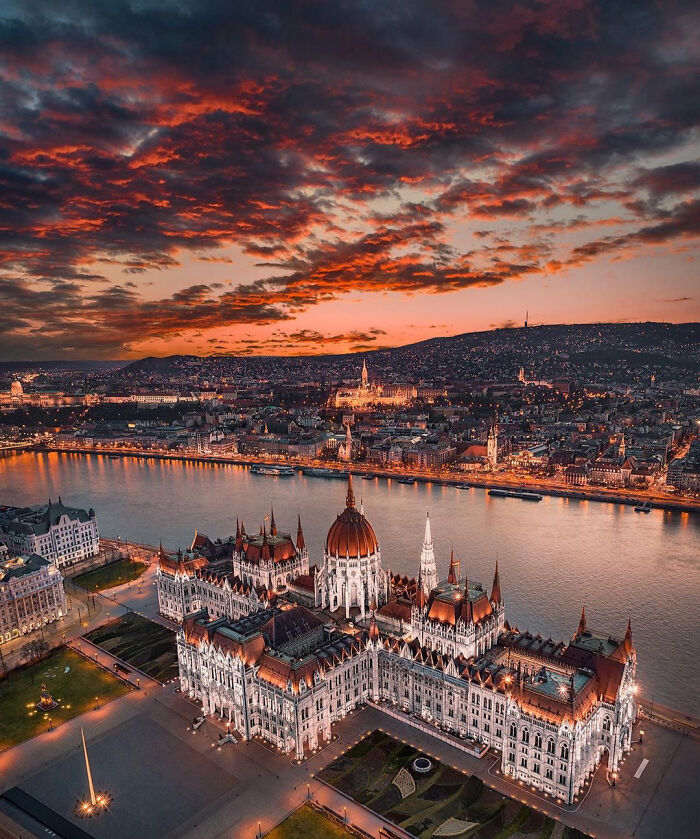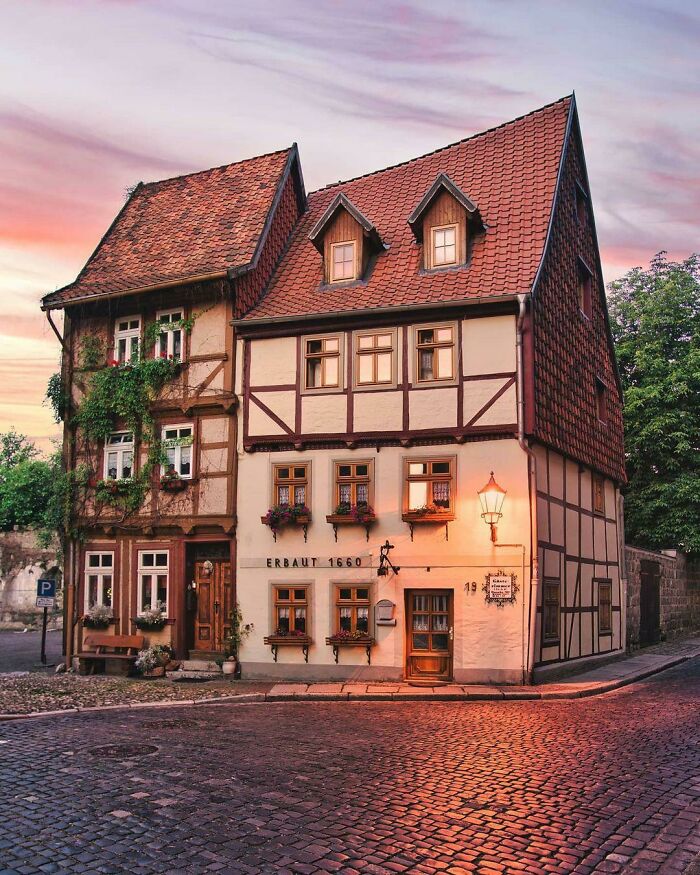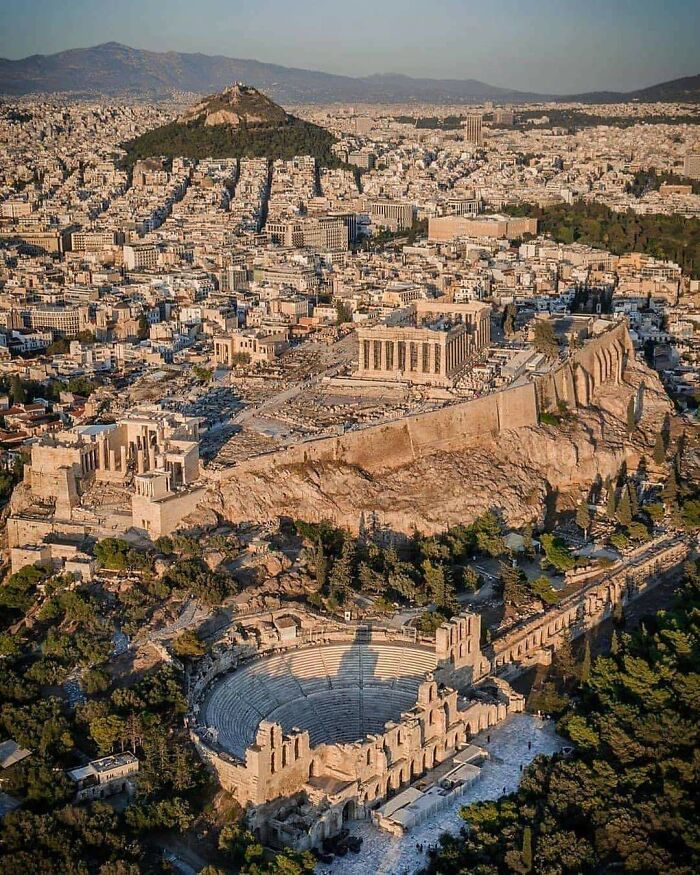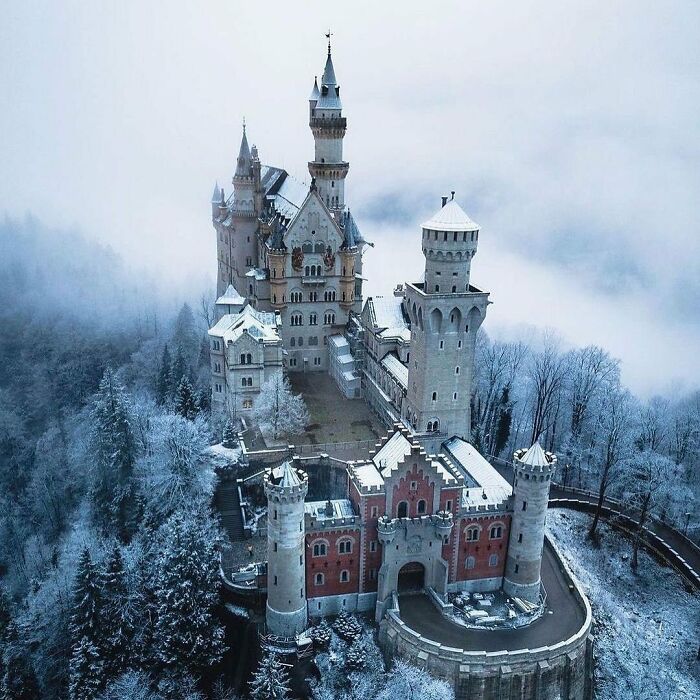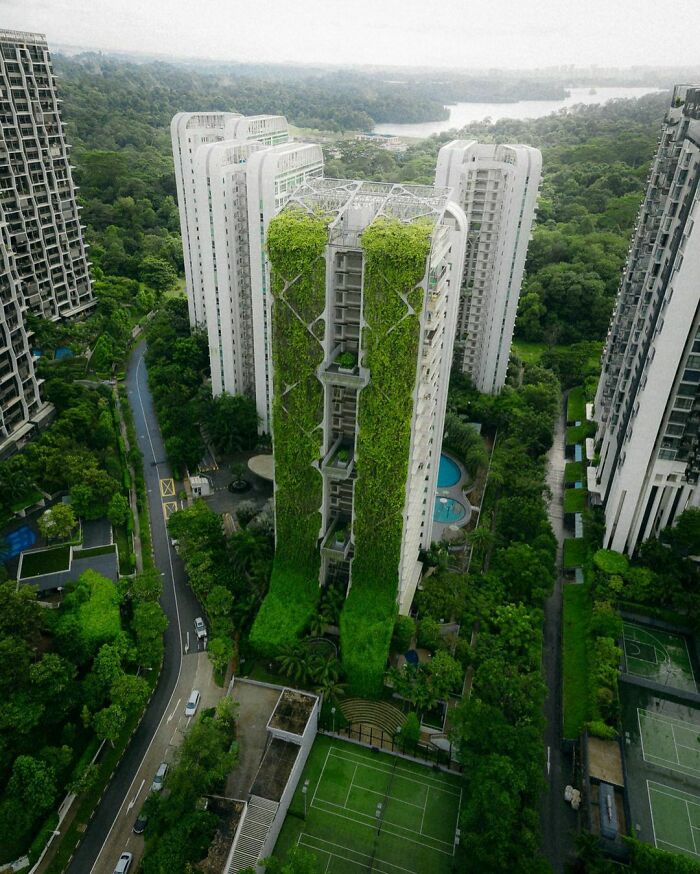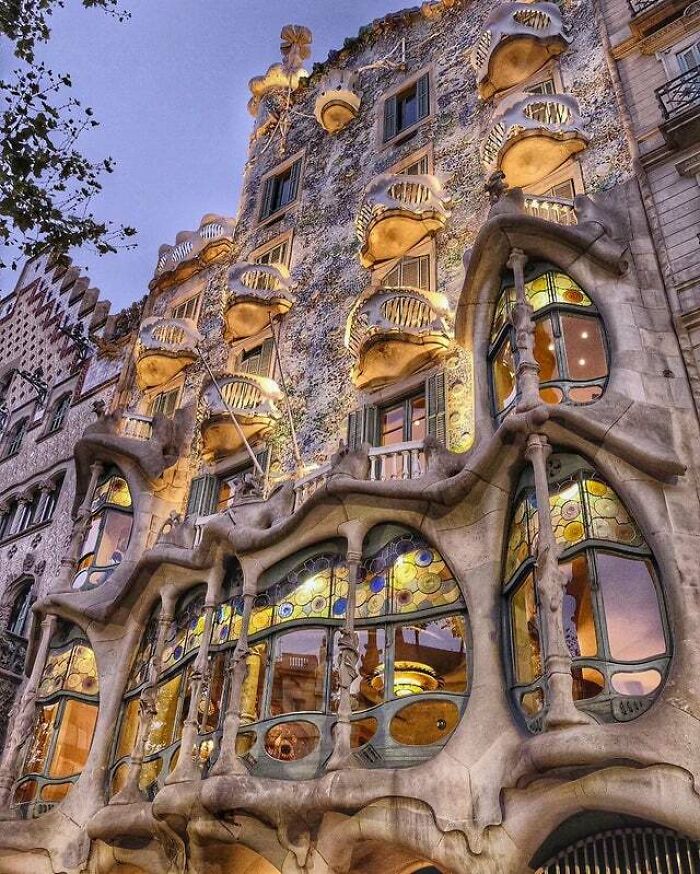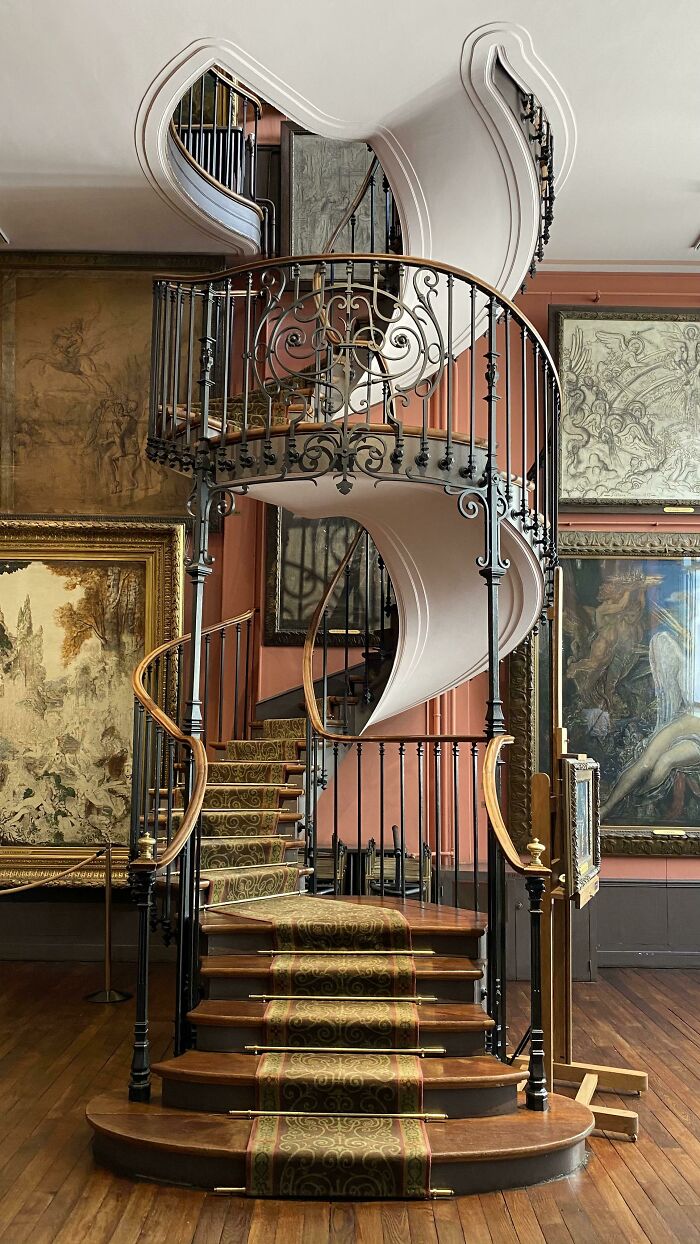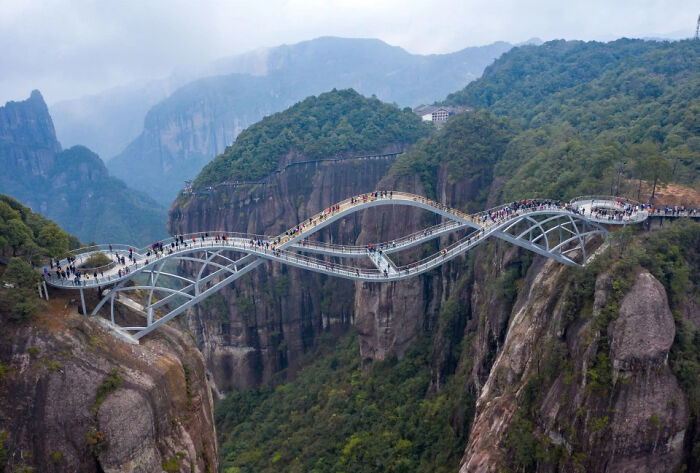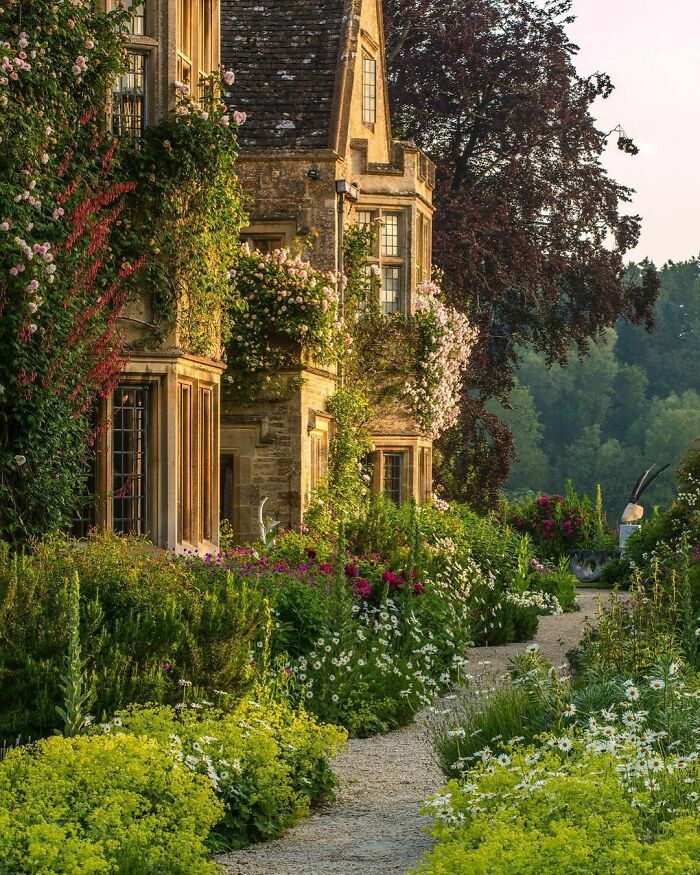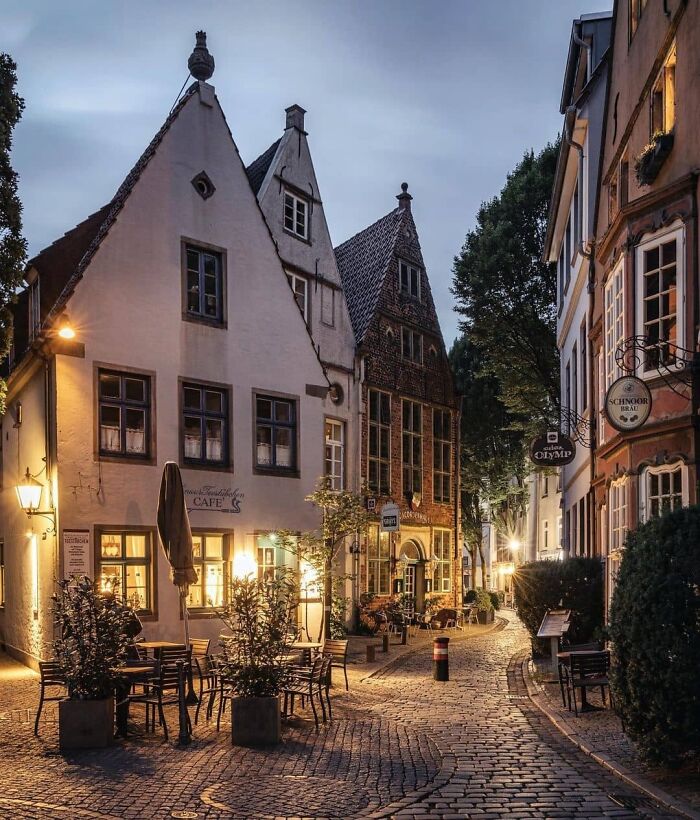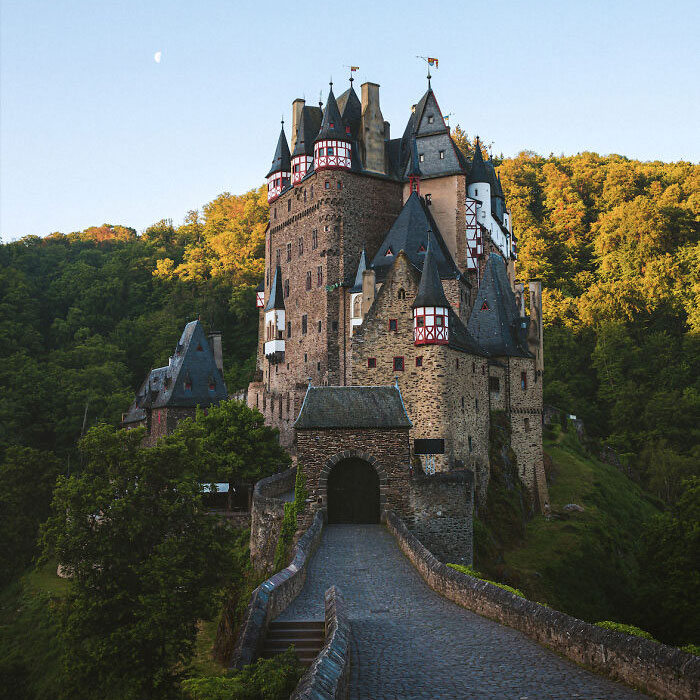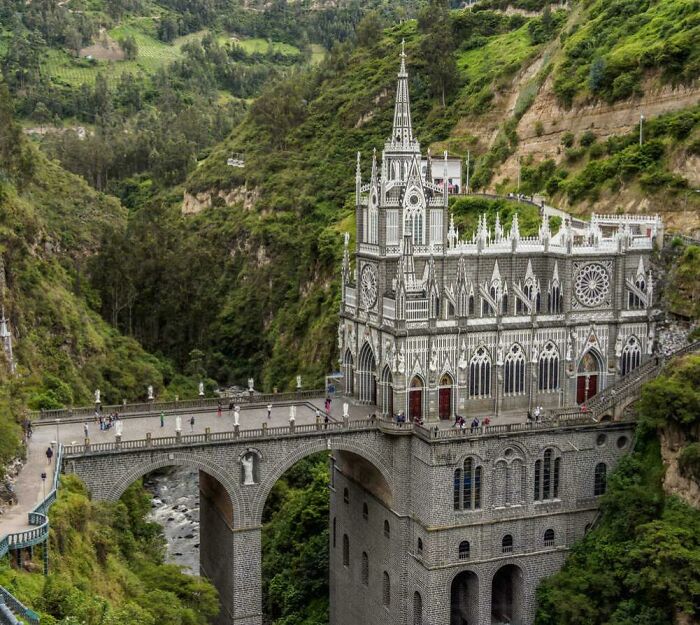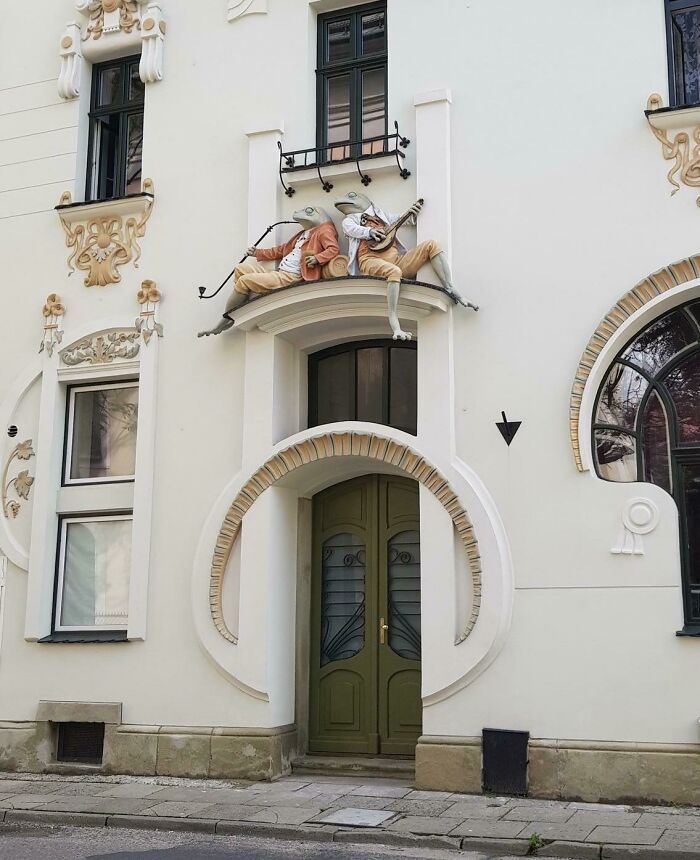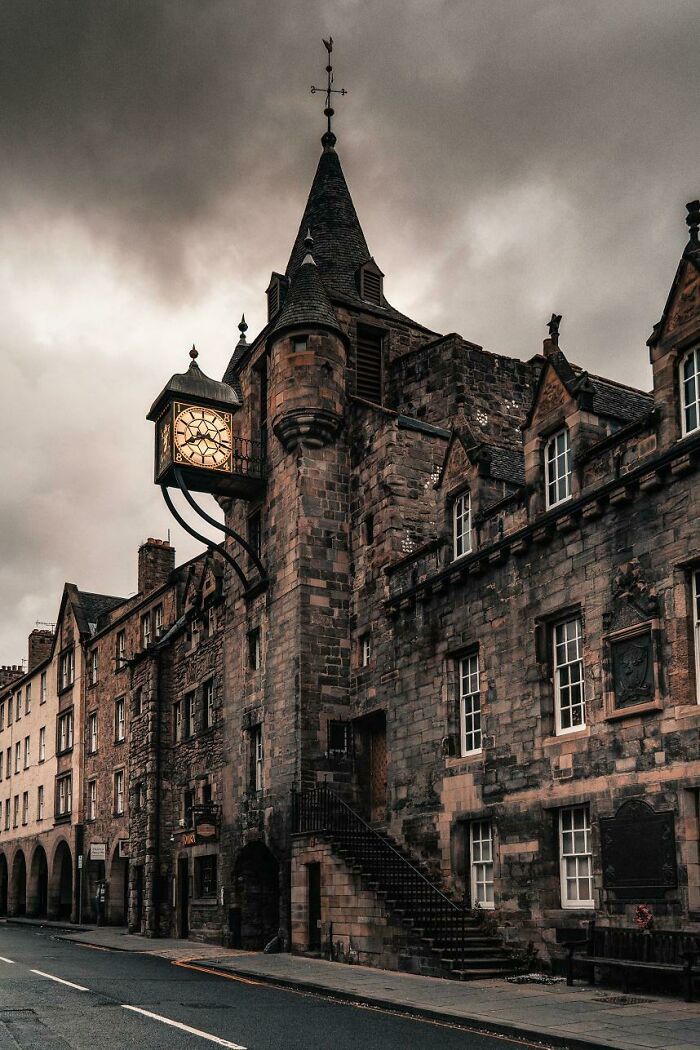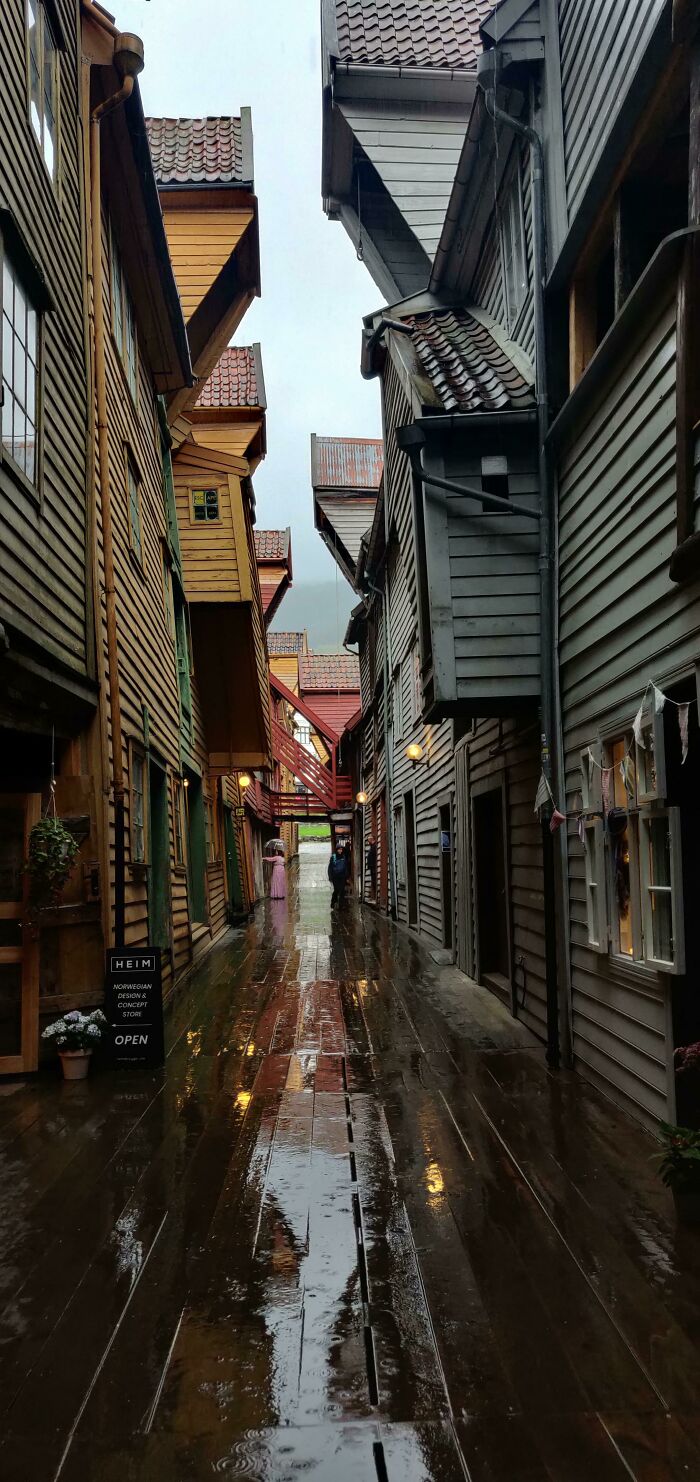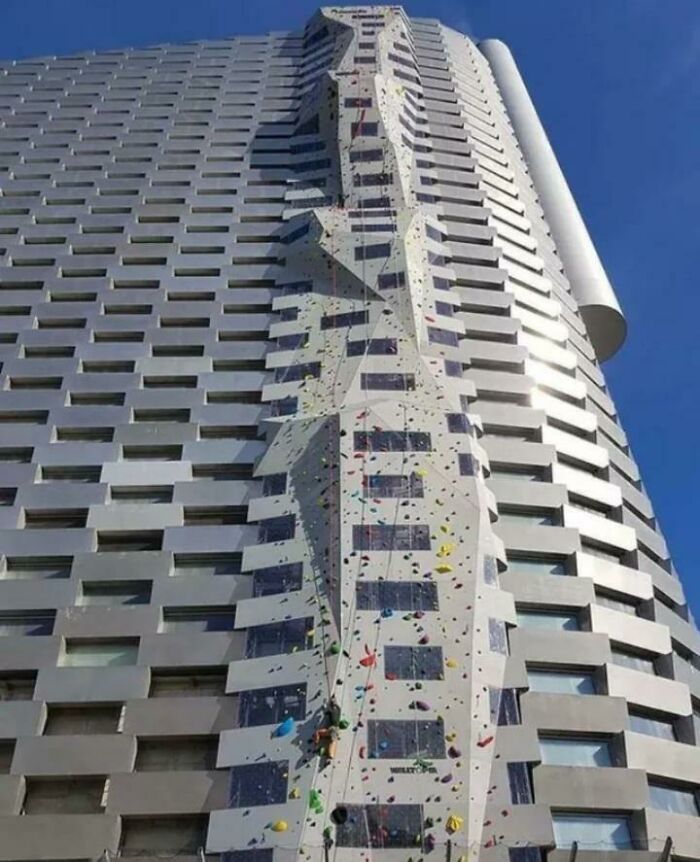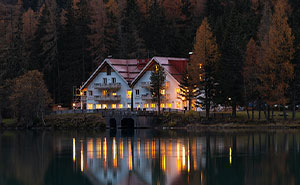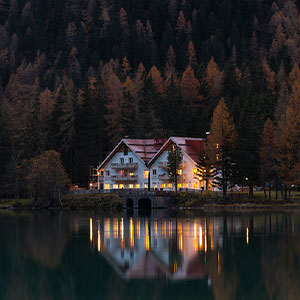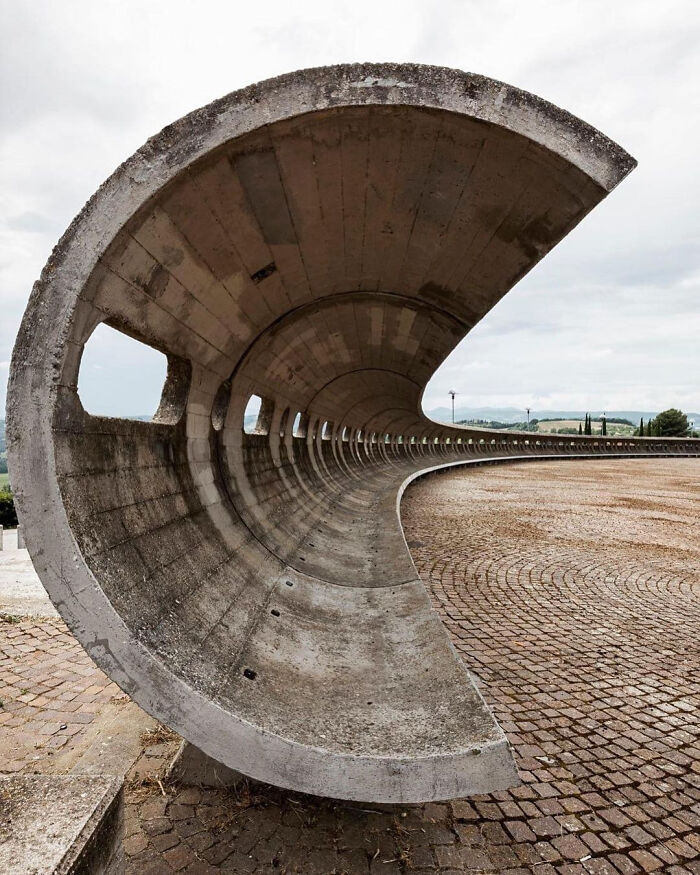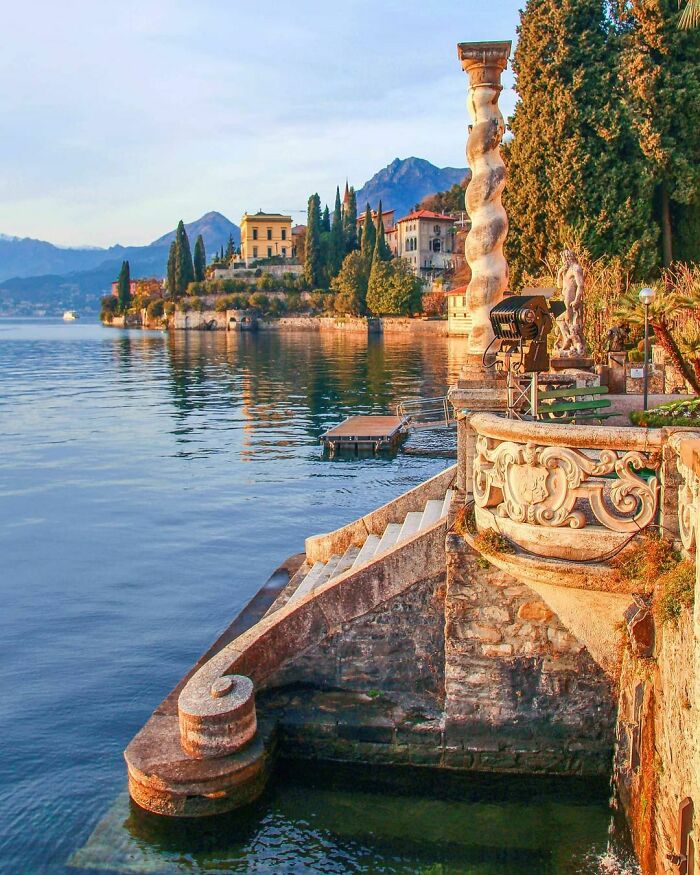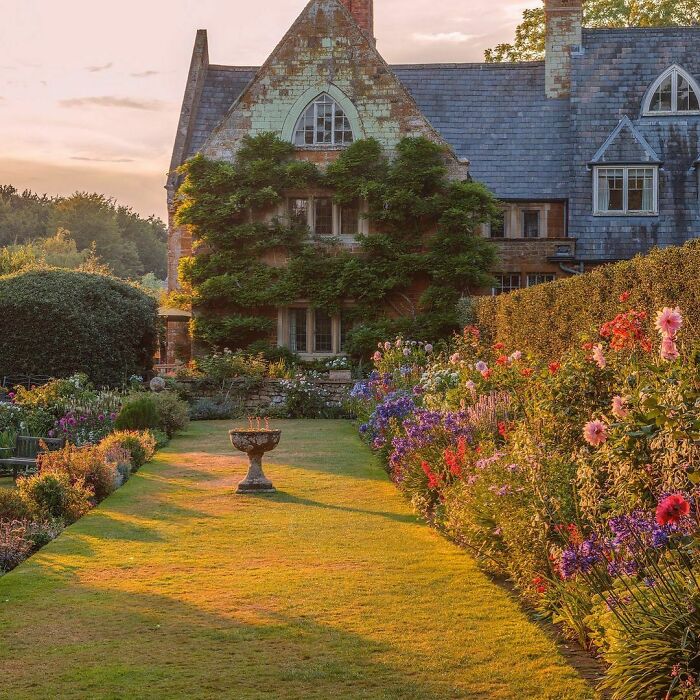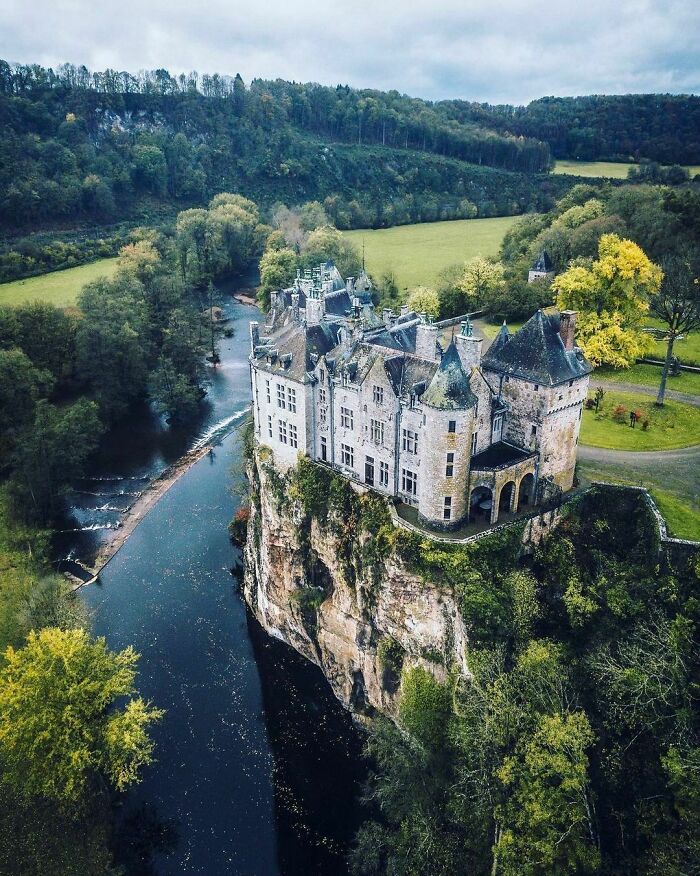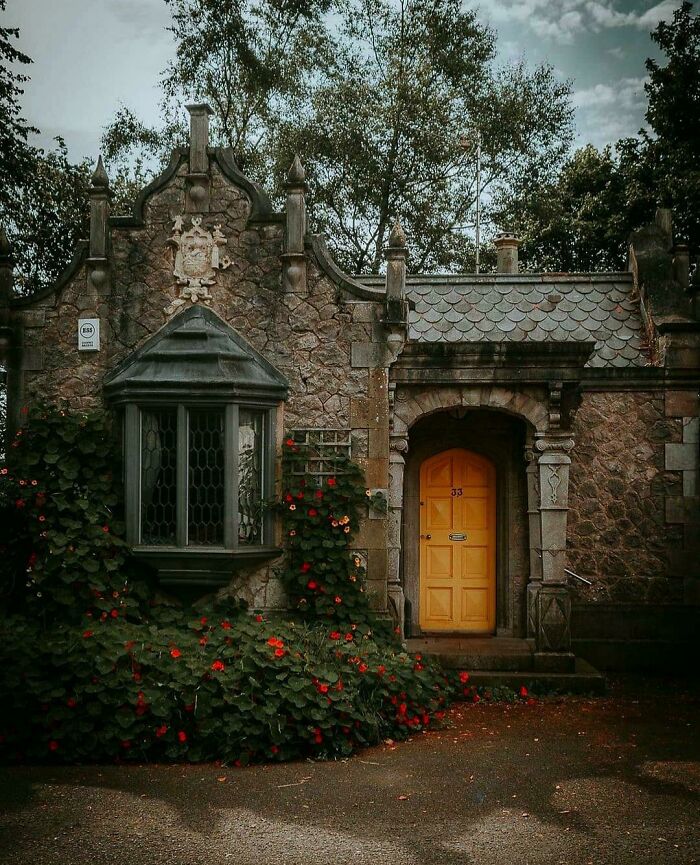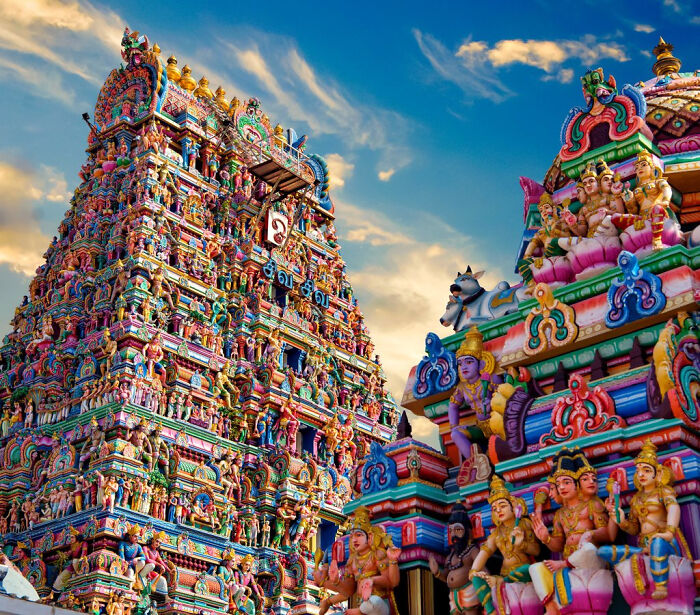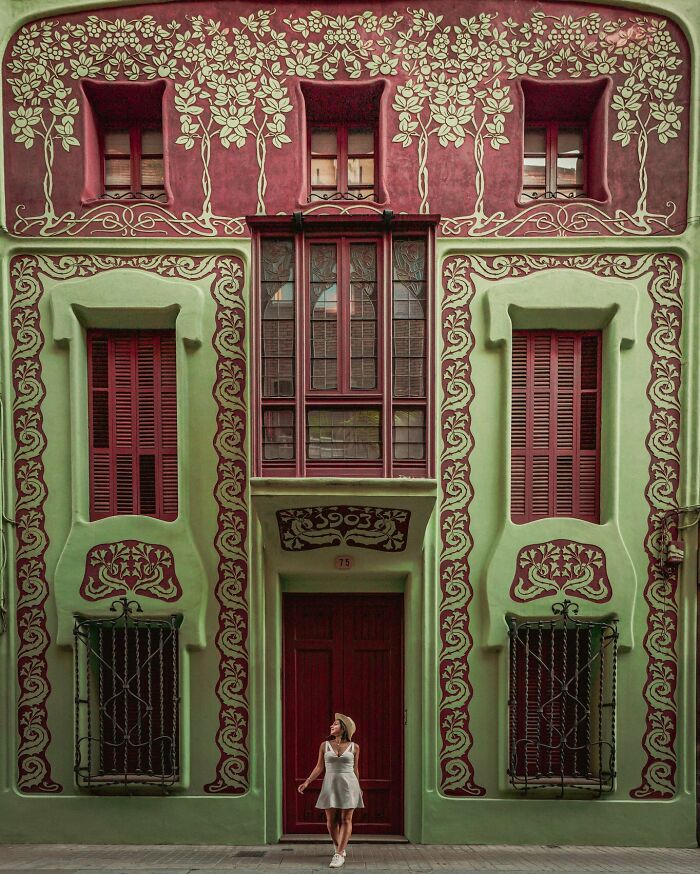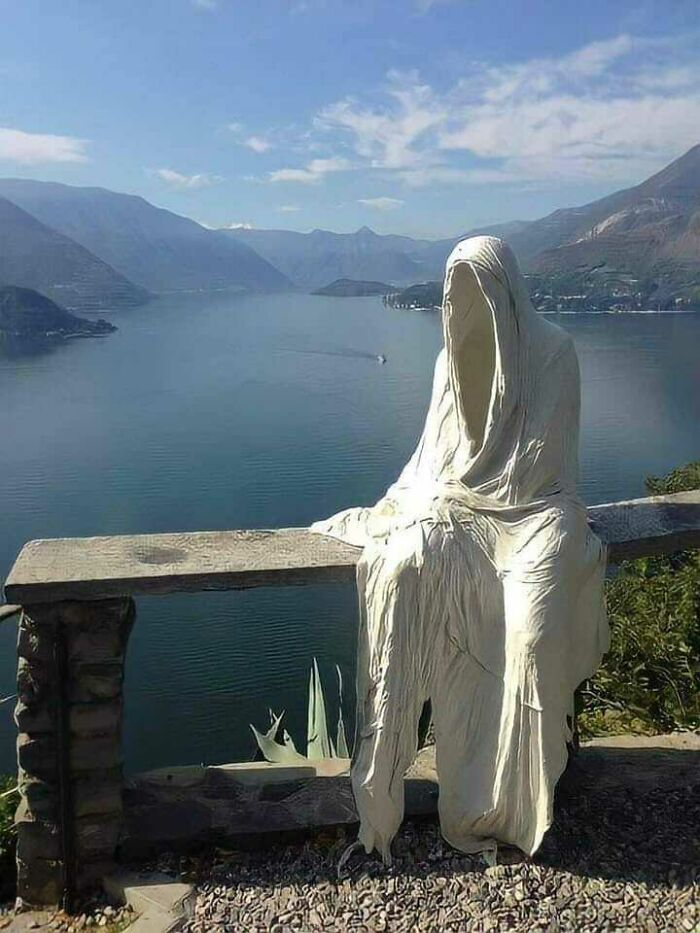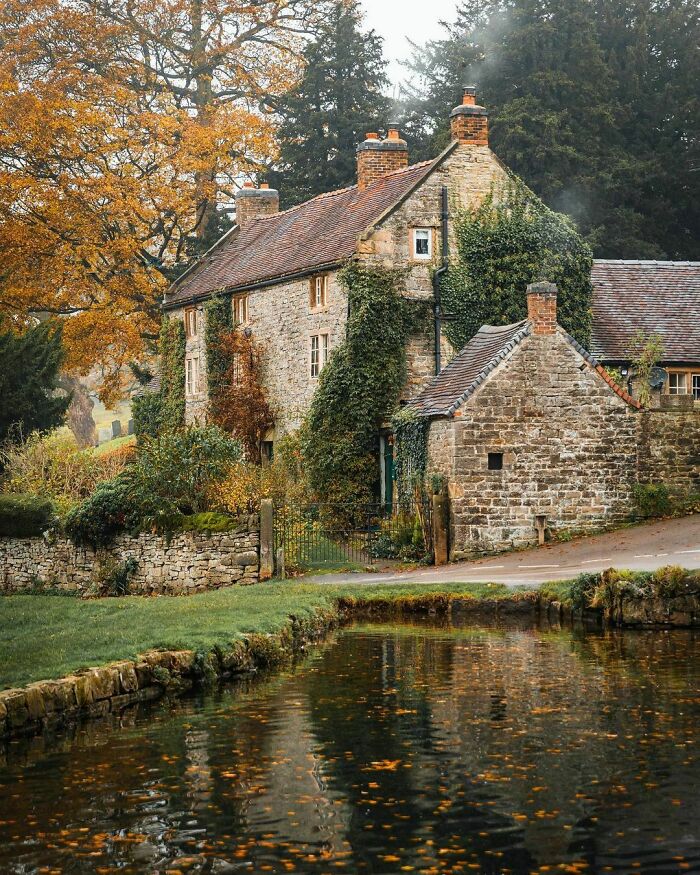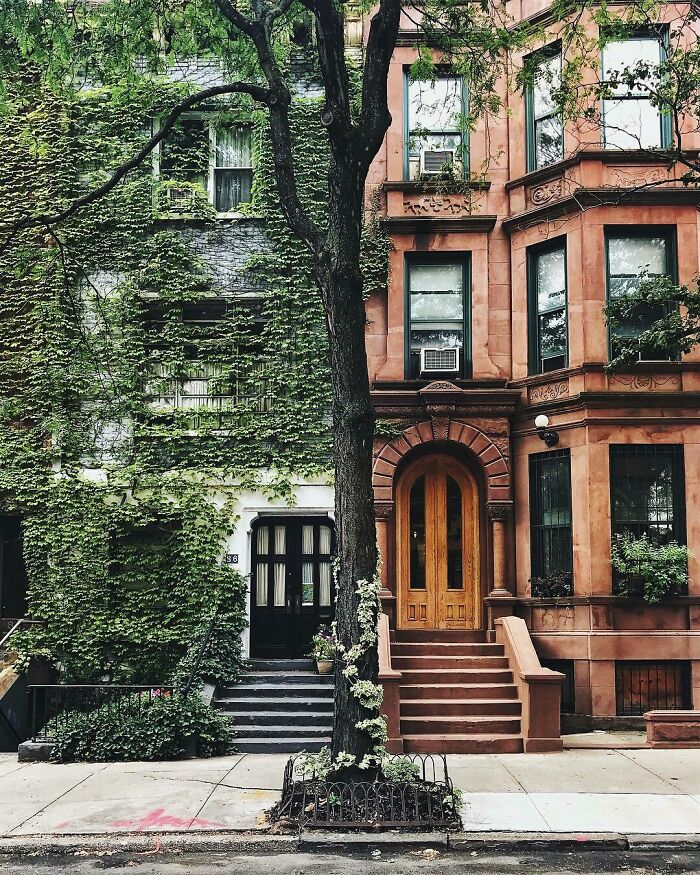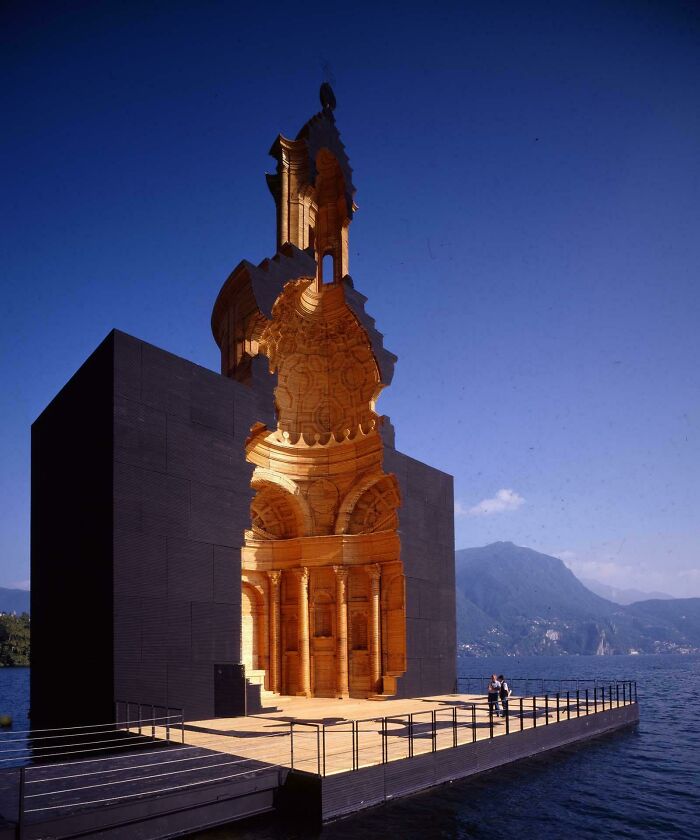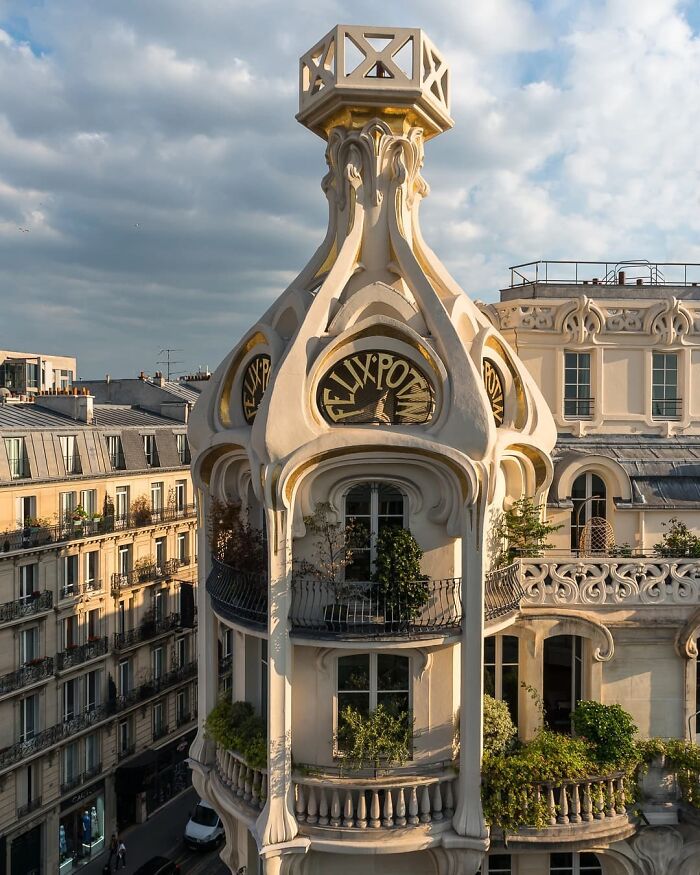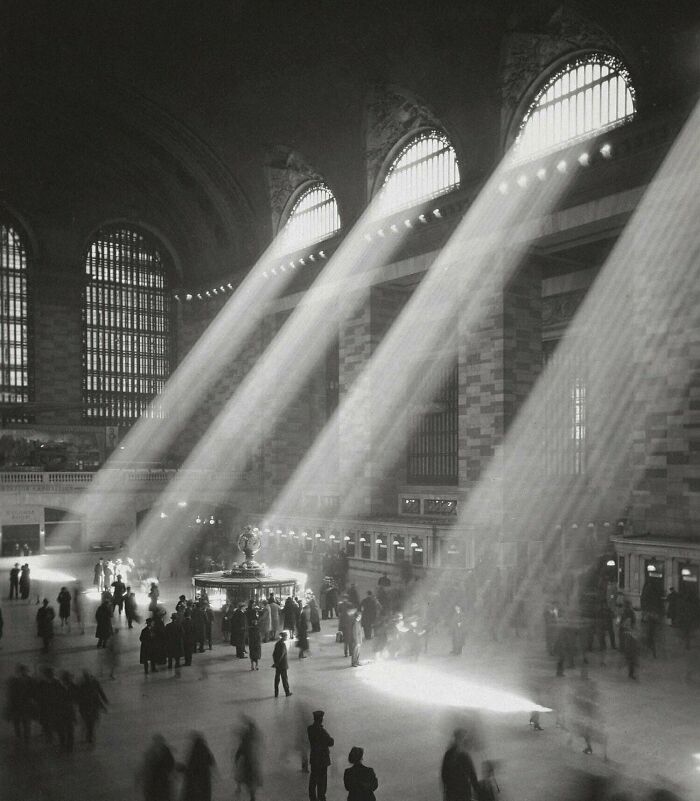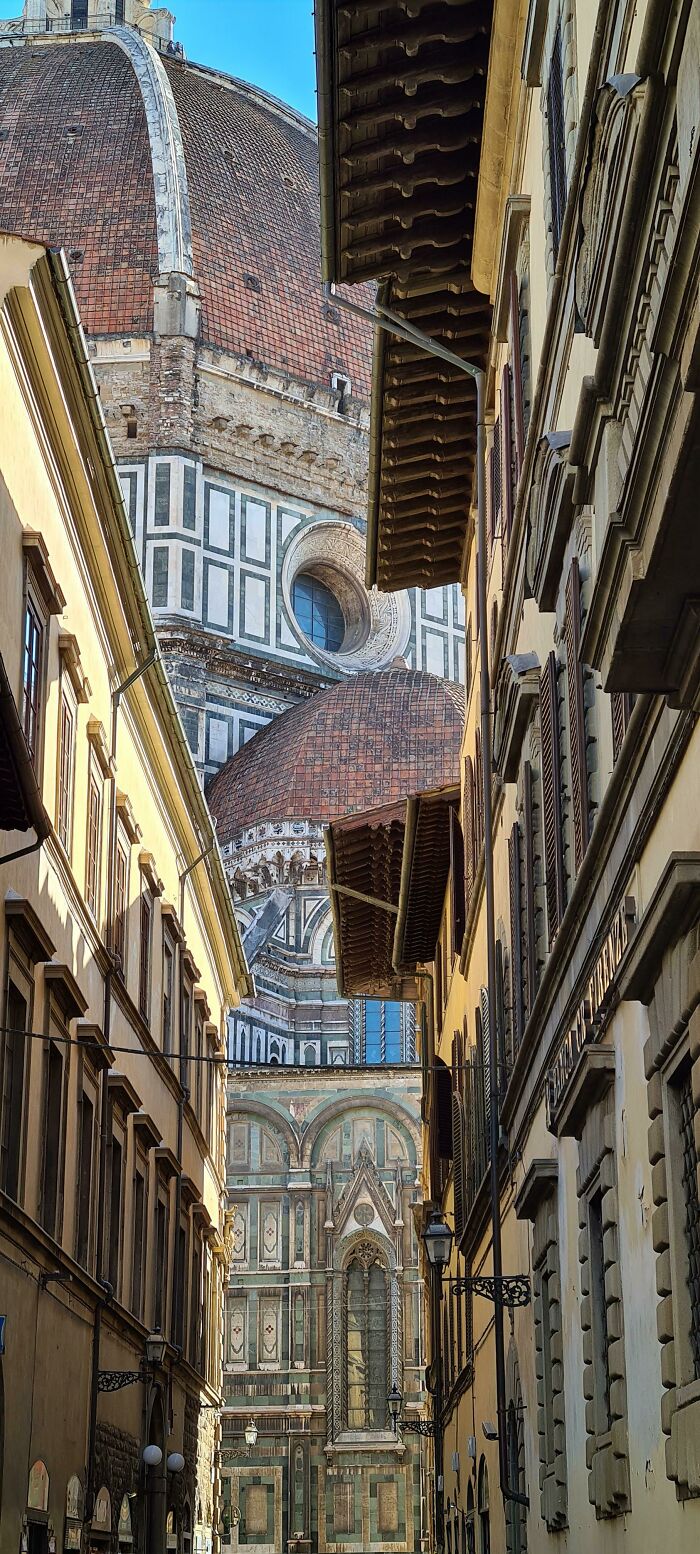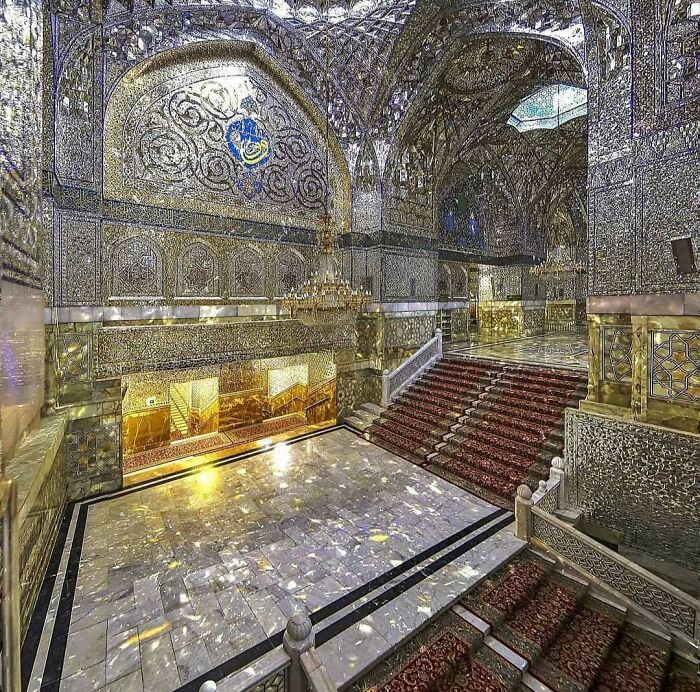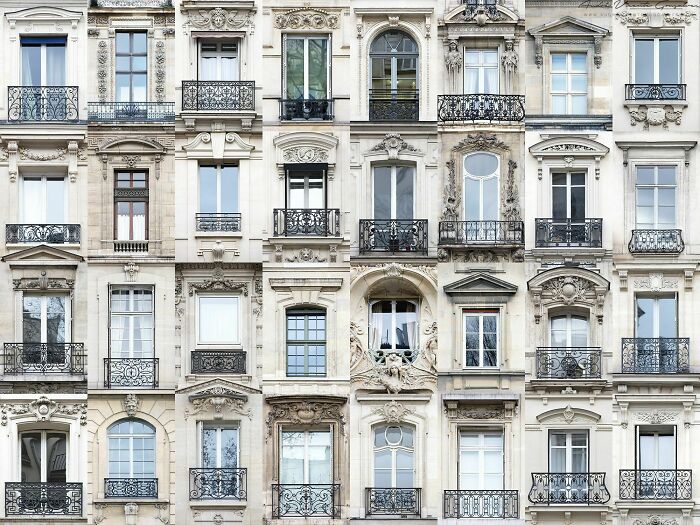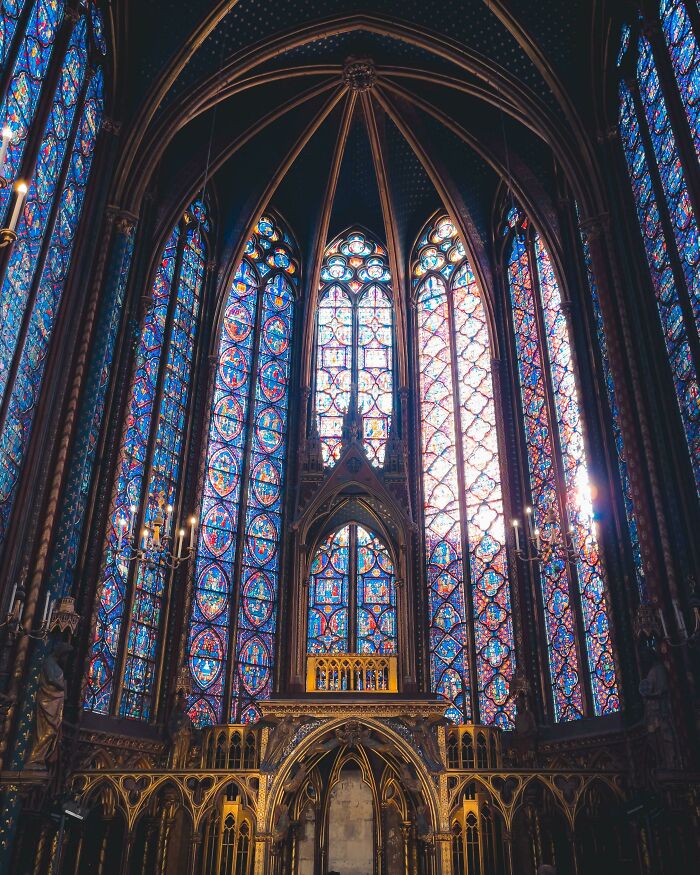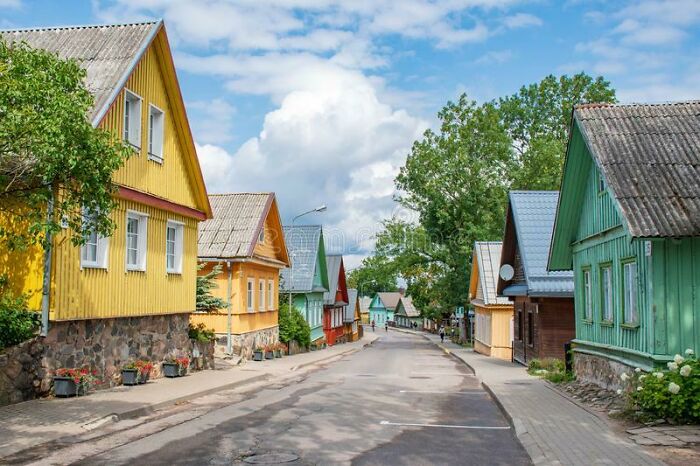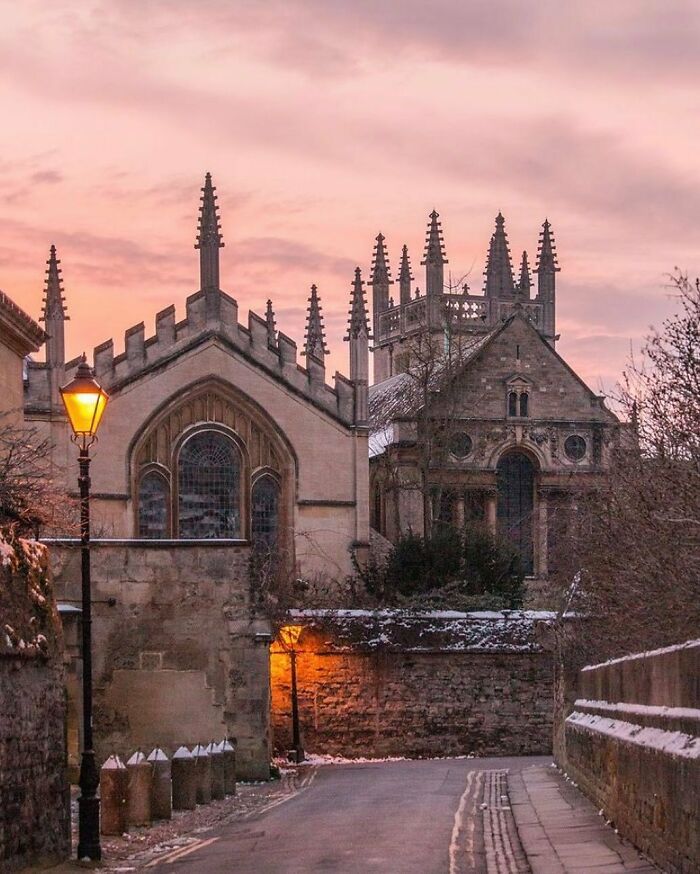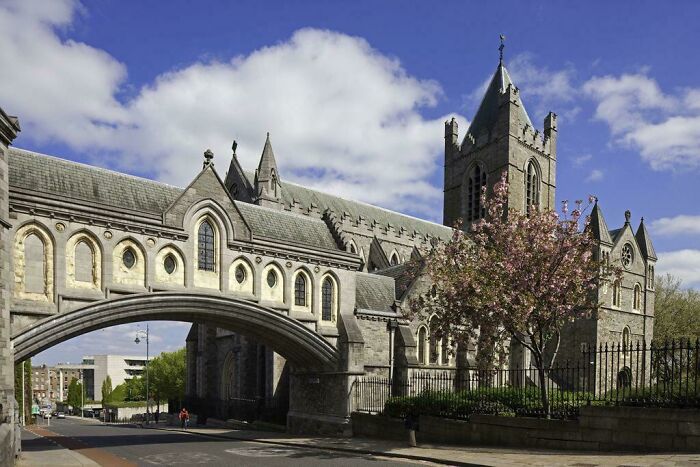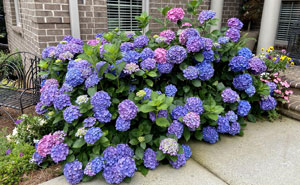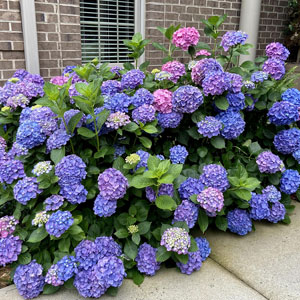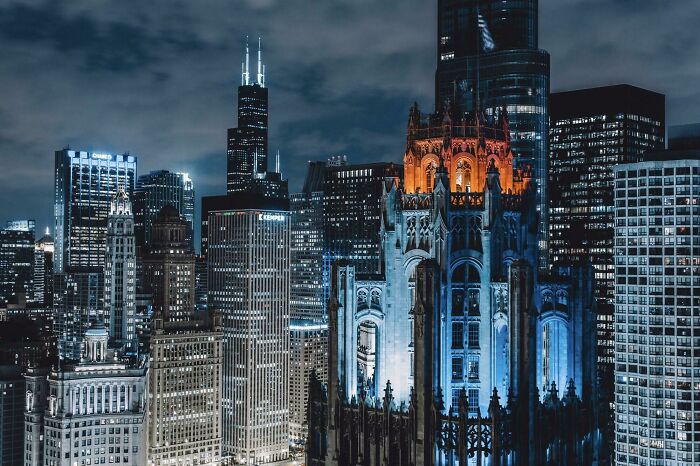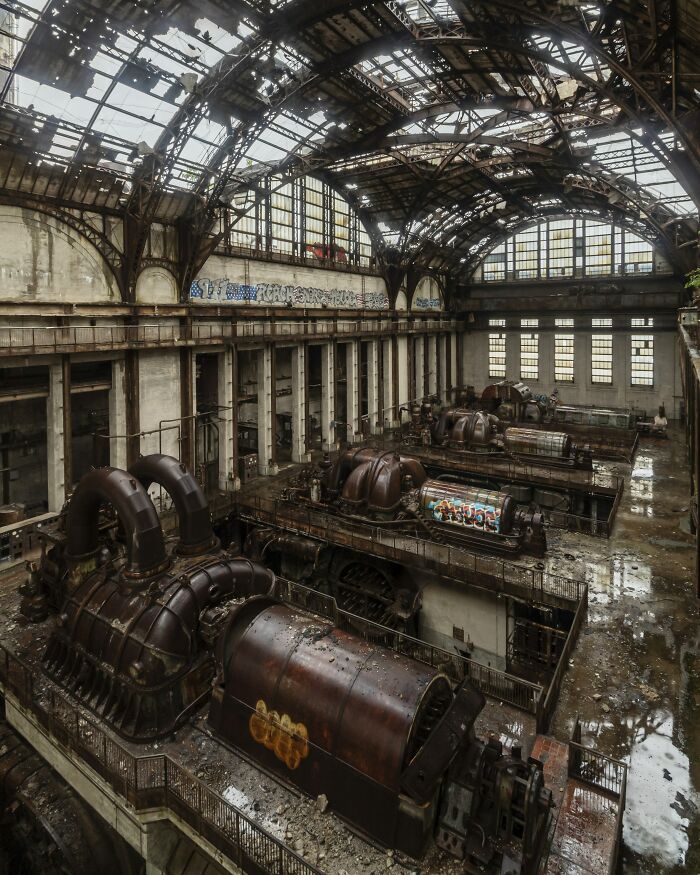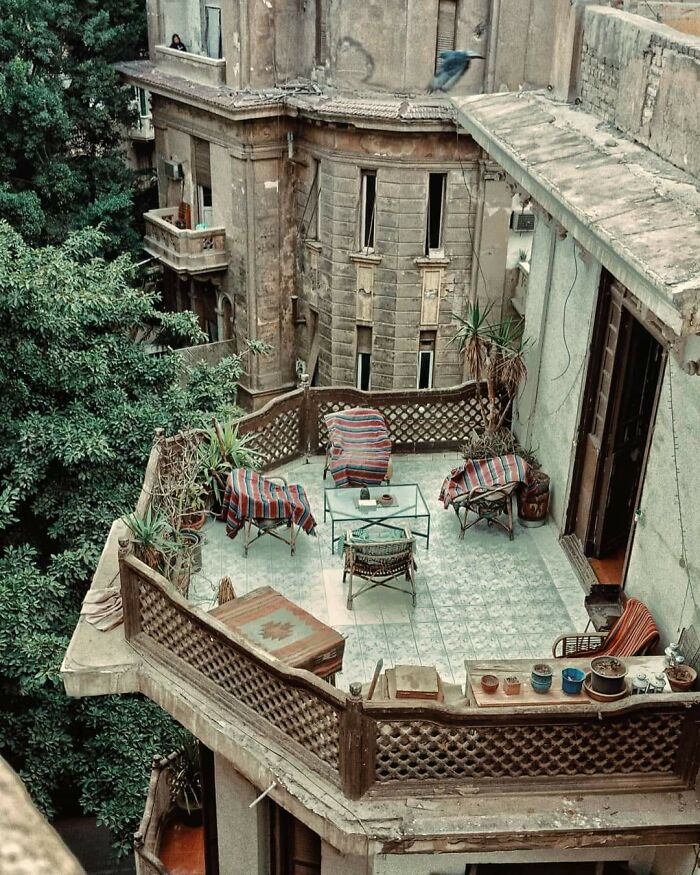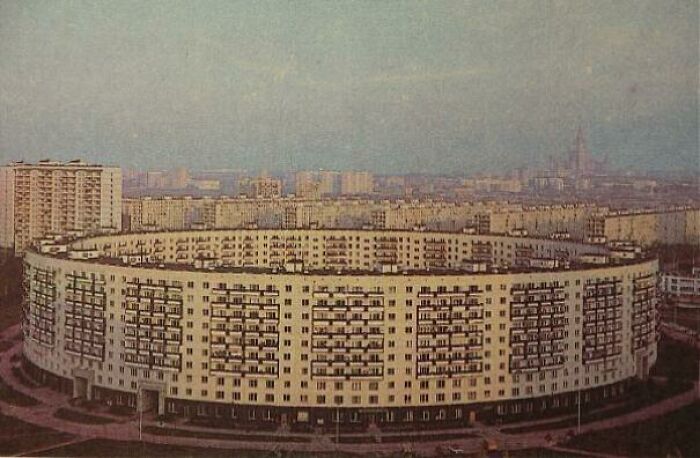Many things can shape a city—its culture, history, social life, or food scene. But perhaps the most distinctive feature would be architecture. Some buildings can completely fascinate you with their astonishing design and pure aesthetics. Through careful urban planning and understanding of the cultural background, the structure of a city can carry you through time while still leaving you in a very particular place.
Need convincing? Let me introduce you to this subreddit page, an online community with more than 923K members. It is dedicated to sharing interesting architecture and some of the most eye-pleasing images of buildings you could find. If you wish to immerse yourself in other customs, traditions and the everyday life of the locals, this is the place to be.
Continue scrolling and upvote your favorite pictures! And if you're still in the mood for some more, make sure to check out Part 1 of this post.
This post may include affiliate links.
Sun And Moon Pagodas In Guilin, China
Even if people say that architecture is not about words, sometimes it may seem like buildings can speak to you. One reason for this could be that construction specifics, curves and the whole style of a building tells you its history. What were the prevailing ideas or opinions at the time, the traditions, celebrations—everything's in the details.
Since its creation in 2011, this Reddit community continues to share pictures of "the beautiful impossibilities that we want to live in". According to the moderators, "Individual images of buildings are the focus of this subreddit," and it's true. The page is full of high-quality pics of architecture that will interest and inspire you.
The Shambles In York, England
It's no secret that beauty is relative. If the structure looks weird to you, it does not actually mean that the creator has poor taste. According to architect, designer and artist Ron Arad, what we consider beautiful architecture is actually all about the "culture, context, personal history, acquired taste and, most importantly, ideas. When an architectural problem is solved by an idea, that idea is always there to be seen in the building – the idea has a visual manifestation that is beautiful."
Another architect, Sam Jacob, said that aesthetics is actually not an essential consideration in architecture: "Beauty, if it’s anything, is a psycho-cultural phenomenon. After all, it’s an idea (or a sensation) that is not inherent to a thing but a qualitative value thrust upon the object of our gaze."
The cycle of beauty goes like this: shock, then acceptance, then mainstream before it becomes the one thing to rebel against. "When people use the word beauty in design, they are seeking refuge from all of the difficulties of modern life – all of its doubts, fears and challenges," he explained.
Mont Saint-Michel, France
Osaka Castle, Osaka, Japan
However, being pleasing to the eye is not the only attribute of great architecture. It can also tell a lot about us as human beings. One of the main things they teach you about ancient cultures is in fact the structures they built. Through it, we can get a glimpse of what the builders and other people living there were like. Let's take ancient Egyptian civilization, we see the pyramids, the temples, the Sphinx and can immediately get a sense of how they viewed their rulers and religion.
Kyoto, Japan
Jewel Changi Airport, Singapore
What’s wrong with Singapore!? It’s like the 3rd time I am seeing an entry from there and all are freaking cool! ❤️
Also, big historic events like The Industrial Revolution had an effect on many life aspects. The birth of mass production of iron and steel was a game-changer in construction. It allowed to design bigger and lighter structures and gave a path to Modernism. So one way or the other, all revolutions and historic changes influenced the way we see and think about design, and if we would take more time to observe it, we could clearly see how.
Inner Walls Of Ta Prohm Monastery. Cambodia, Khmer Empire, 12th-13th Century
This 50-Foot Tall Statue Of A Native American Woman In South Dakota Titled “Dignity”
The 24 Year Old 'Wisteria' Cottage. This Beautiful Cottage Is Located In Inistioge, Co. Kilkenny, Ireland
If design concepts tell so much about our culture and environment, what would they say about our present way of life? One very important topic now is sustainability. The U.S. Energy Information Administration stated that buildings generate nearly 40% of annual global CO2 emissions and that the global building floor area is expected to double by 2060.
Hungarian Parliament Building, Budapest
Chefchaouen, Morocco
Two 17th Century Half-Timbered Houses At Hohe Straße 18 And 19 In Quedlinburg, One Of The Best-Preserved Medieval And Renaissance Towns In Europe That Escaped Major Damage During World War II. Harz, Saxony-Anhalt, Germany
Since the population and sea levels will continue to rise, architects will have to adapt. Architecture Quote is an innovative platform where you can find the right architect for any type of project you have in mind. According to them, "Architecture is the solution to poverty, overcrowding, and land depletion." They provide a few thoughts on what future trends in construction will look like.
Athens
The Neuschwanstein Castle In Germany Looks Even More Stunning In Snow
Tree House, Singapore
I love Singapore and how they integrate nature into their buildings, beautiful! Nature vs modernism.
Nowadays, architects are urged to take into account sustainability, carbon footprint, price, and innovations. When it comes to choosing building materials, timber seems to be a trend that's coming back. It has been used for thousands of years and there still are some buildings that can be dated back to 6000 B.C. "Timber is an inexpensive, light, and easy material to work with during construction," Architecture Quote explained. "The future of architecture inches closer and closer to more eco-friendly, sustainable solutions each year. Timber actually stores carbon and helps our planet."
Casa Batlo, Barcelona, Spain
This Is One Of My Favorite Museum’s Stairs (Paris)
Ruyi Bridge, China
Plywood and newspaper wood are also being used more frequently due to the new look that they give. There's the growing idea of repurposing materials for a new use, like newspapers. They are especially popular in small living spaces since they give a sense of warmth to the interior.
English Country Garden Surrounding Asthall Manor, A Gabled Jacobean Cotswold Manor House Originally Built In The 1620s And Later Altered And Enlarged In The 1910s. Asthall, Oxfordshire, England
Evening Scene In Bremen, Germany
My Favorite Castle In Germany
According to the platform, glass is also considered to become an important material in future housing. There's a new glass technology that can harness heat from the sun and add to the insulation of the building. "This is particularly exciting for energy efficiency and sustainability in the future," they said. "Future buildings feature more and more glass as we have learned that it can help with stress, anxiety, productivity, and depression."
Las Lajas Shrine - Built 1916 -1949 Designed By J. Gualberto Perez & Lucindo Espinosa - Nariño, Colombia
Wow! Going straight to the list “Places to visit before dying” ❤️
The Frog House In Bielsko-Biała, Poland
Tolbooth Tavern, Edinburgh / Sir Lewis Bellenden
Another thing that is considered is earth materials. Even though making walls out of mushrooms might sound crazy, it is possible. And it's actually better for us to breathe in. "Materials like mud and adobe have been used since the beginning of civilization. The architecture of the future has taken inspiration from the past." Using the resources that our planet provides us is not only greener but also economically attractive.
Wooden Houses In Bergen, Norway
Have a very similar picture as this! Without the rain though, we were extremely lucky during our stay at Bergen. Went there by Bergen express from Oslo, one of the best rides I've been on!
80 Metre Climbing Wall Built On The Side Of A Power Plant In Copenhagen, Denmark
Concrete Bench, Part Of The Santuario Dell'amore Misericordioso Complex, Todi, Italy (By Architect Julio Lafuente, 1953-1974)
Besides, there are new types of buildings that are emerging due to our fast-paced lives. For example, tiny or modular homes. They provide a less environmental impact while saving you time and money. With small homes, you don't have to stay at exactly one location, you can roll your house anywhere you wish. With modular architecture, houses are built off-site and being delivered already finished to the site.
Ornate Carvings And Solomonic Columns On The Stone Steps Leading To The Water In Varenna, A Town On The Scenic Shores Of Lake Como, Northern Italy
English Garden Of The Coton Manor, A 17th Century Country Manor House That Was Extended In The 1920s, Coton, Northamptonshire, England
Walzin Castle On A Cliff Overlooking The River Lesse, A Castle That Started Construction In The 13th Century And Was Restored Several Times Since, Namur, Wallonia, Belgium
"The demand for these small homes is on the rise and we can expect to see many more tiny homes in the future. Architects are building for smaller and smaller spaces as populations rise, whether it is a tiny home or a small apartment. The future is all about small."
Old Gatehouse In Northern Ireland
These are common around the UK too. Wealthy estates would have these houses posted at the entry to their land hence the name gate house. You would not be able to enter unless the gate master allowed entry. Many have now been turned into beautiful cottages/houses.
Kapaleeswarar Hindu Temple In India
La Casa Pàdua, An Example Of Catalan Modernism Architecture Originally Built As A Single-Family Residence In 1903, Sarrià-Sant Gervasi District Of Barcelona, Spain
Lastly, let's not forget green buildings. According to the World Green Building Council, “A ‘green’ building is a building that, in its design, construction or operation, reduces or eliminates negative impacts, and can create positive impacts, on our climate and natural environment.” So it seems that the hope for the future of architecture is using low-waste and reusable materials, living tighter, greener and more mobile.
Ghost Sculpture In The Castle Of Vezio, Italy
Stone House In The Small Village Of Tissington, Derbyshire, England
Architectural Juxtaposition In Clinton Hill Historic District, Which Consists Of 1,063 Largely Residential Buildings Built Between The 1840s And 1930 In Contemporary And Revival Styles Popular At The Time, Clinton Hill, Brooklyn, New York City
Even though the facts of environmental impact and population rise sound alarming, such architectural trends are giving us hope to be excited about the future of construction. Admire these photos on your screen and try to think about how they reflect our lives. And if that seems like not enough, we have some more stunning architecture right here and here.
San Carlo Alle Quattro Fontane, Lugano, Switzerland
Concrete Turret Of The Félix Potin Building, A 1904 Art Nouveau Department Store With An Exterior Of Moulded Concrete Casts On Rue De Rennes, 6th Arrondissement Of Paris, France
Grand Central Terminal, NYC, The Sun Can't Shine Through Like That Now Due To The Surrounding Tall Buildings. 1929
Cathedral Of Saint Mary Of The Flower, Florence
There's a fascinating book about the design and construction (and some of the politics surrounding it all, of course), called Brunelleschi's Dome.
Imam Reza Shrine, Mashhad, Iran
Windows Of Paris
for me, one of the most beautiful door of Paris is at 29 avenue Rapp 75007 Paris (you can see it here, on the middle of the photo)
Sainte-Chapelle At Paris, France
Traditional Old Wooden Houses In Trakai, Lithuania
these are traditional karaim houses and they all have three windows facing the street on the ground floor - one for God, one for the host, and one for guests.
Snowy Evening, Oxford University
Old Bridge Over A Modern Road. Dublin, Ireland
Top Of Tribune Tower, Chicago Illinois
The Architecture In Some Older Power Plants Were So Unique And Ornate, This One Built In 1925 Was A Neoclassical Design Inspired By Roman Bath Houses. Although It Has Seen Better Days It's Still Beautiful And Dripping In History
Cairo, Egypt
The First Of The Two Round Houses Constructed In Moscow 9-Storied, 936 Flats, Built In Late 1970s
Note: this post originally had 119 images. It’s been shortened to the top 50 images based on user votes.
All these beautiful places to see and COVID is keeping us at our homes. TERRIBLE.
I missed Niemeyer's architeture in Brasilia. It's stunning. download-6...048028.jpg 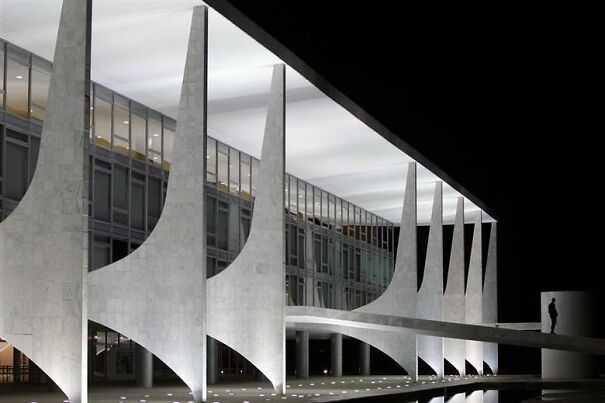
I’m so glad that some buildings are still there to preserve the designs. Unlike the city where everything’s nothing but boring plain boxes
All these beautiful places to see and COVID is keeping us at our homes. TERRIBLE.
I missed Niemeyer's architeture in Brasilia. It's stunning. download-6...048028.jpg 
I’m so glad that some buildings are still there to preserve the designs. Unlike the city where everything’s nothing but boring plain boxes
